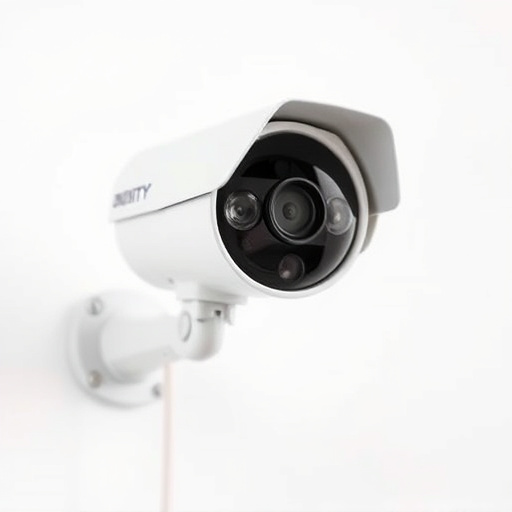Understanding the difference between LED dummy cameras and authentic IR sensors is key for enhancing security. Homeowners should strategically install dummy cameras in high-visibility areas like front entrances, windows, and perimeter fences to deter potential intruders. The choice of LED lighting depends on location—IR LEDs for outdoor spots with natural light, and warm white LEDs indoors. Optimal placement ensures maximum realism and deterrence, avoiding poor placements and inconsistent power supplies, while targeting common crime spots with real cameras for comprehensive security.
“Uncover the power of deception with fake camera infrared sensors—a clever security solution. This guide explores the art of simulating active surveillance, helping you create a safe haven. We delve into understanding these dummy cameras, their benefits, and where to strategically place them for maximum impact. Discover the types of LED lighting that ensure lifelike mimicry and learn from common installation blunders. Elevate your home or business security with our expert insights on the best places to install dummy cameras.”
- Understanding Fake Camera Infrared Sensors
- Best Places to Install Dummy Cameras for Security and Deterrence
- Types of LED Lighting for Effective Mimicry
- Installation Tips and Common Mistakes to Avoid
Understanding Fake Camera Infrared Sensors
Understanding Fake Camera Infrared Sensors
Infrared (IR) sensors are a critical component in dummy cameras, designed to mimic real camera technology and deter potential intruders. However, it’s essential to understand that not all IR sensors are created equal. Many “fake” or dummy cameras use LED lights instead of actual infrared sensors, which can significantly impact their effectiveness. These LED lights may appear to emit IR radiation from a distance but lack the sensitivity and range of genuine IR sensors.
The best places to install dummy cameras equipped with authentic IR sensors are areas that require high security, such as entry points, perimeters, and valuable asset locations. In contrast, LED-based dummy cameras are more suitable for decorative or basic deterrent purposes in less critical zones. Knowing the difference between real and fake sensors can help homeowners and business owners make informed decisions when enhancing their security systems, ensuring they invest in technology that aligns with their protection needs.
Best Places to Install Dummy Cameras for Security and Deterrence
When considering the best places to install dummy cameras for security and deterrence, it’s essential to choose high-visibility areas that offer clear line-of-sight. The front entrance of your home or business is a prime location; a fake camera here can send a strong signal to potential intruders. Other strategic spots include windows, garage doors, and the perimeter fence, as these are common points of entry.
Additionally, areas with high foot traffic or near valuable assets like security gates, surveillance signs, and even dummy sensors in the yard can significantly enhance deterrence. The key is to make it appear that your property is well-protected, which can be achieved by placing dummy cameras at realistic angles and positioning them in such a way that they cover multiple areas simultaneously.
Types of LED Lighting for Effective Mimicry
When setting up dummy cameras for security or surveillance purposes, the type of LED lighting used plays a significant role in achieving realistic mimicry. The best LED lights for this task offer a balance between brightness and color accuracy. Infrared (IR) LED sensors are particularly effective as they emit light invisible to the human eye but detectable by cameras, mimicking genuine heat signatures. These are ideal for outdoor installations, especially in well-lit areas like the best places to install dummy cameras—open fields, rooftops, or near windows—where visible light is abundant.
For indoor scenarios, consider white LED lights with a warm tone, which can mimic natural daylight. This option is versatile and suitable for various settings, including offices, stores, or homes, allowing you to choose the best places to install dummy cameras based on your specific needs. The key is to select lighting that accurately replicates real-world conditions to ensure your fake camera looks convincing and serves its intended purpose effectively.
Installation Tips and Common Mistakes to Avoid
When installing dummy cameras, or fake infrared sensor LEDs, there are a few tips to keep in mind to ensure optimal performance and realism. Choose best places for installation—areas with good visibility, like entryways, windows, or outdoor paths, where real cameras would naturally be placed. This enhances their deterrence effect. Use mounting hardware suitable for the surface type, whether it’s a wall, fence, or ceiling, to avoid accidental removal.
Common mistakes to avoid include poor placement, such as hiding them in plain sight where they look unrealistic, and inconsistent power supply, which can cause flickering lights or complete failure. Make sure each dummy camera has adequate battery life or is wired correctly if powered by the wall. Additionally, overlook areas like corners or hard-to-see spots, as these are prime targets for thieves; real cameras strategically placed in these locations serve as effective deterrents.
Infrared (IR) dummy cameras, or fake camera infrared sensors, offer a cost-effective security solution by deterring potential intruders. By strategically placing these devices at the best places to install dummy cameras, such as entry points and high-risk areas, you can create the illusion of a fully functional surveillance system. With the right type of LED lighting to mimic real IR cameras, along with careful installation and attention to detail, these dummy cameras become an effective deterrent without breaking the bank. Remember, understanding your environment and choosing the right components are key to maximizing their impact as part of your overall security strategy.
